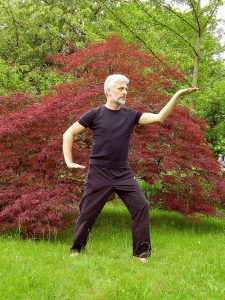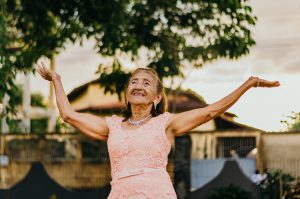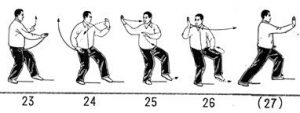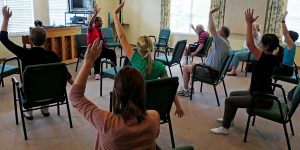Newsflash: 31 million older Americans are not getting enough exercise! Are you one of them? Well if you are, you’re not alone. The CDC warns that inactivity increases risk for falls, broken bones, serious disease, and early death, but you have the power to turn things around. Getting the motivation to start moving is tough but hopefully one of these low impact exercises will click and get you into a routine to keep you moving for years to come.

What is low impact exercise?
Low impact exercise slowly gets your heart rate up and causes less pressure on your joints than high impact exercise. Low impact exercise can help you achieve your exercise goals without aggravating an existing injury or causing a new one. Low impact exercise also helps maintain and build muscle mass that decreases as you get older. When you have more muscle tissue, your body can continue burning calories even while you’re resting.

Walking
Walking is probably the first thing that comes to mind when you think of low impact exercises. Probably because it’s one of the easiest. Anywhere you go, you can take a walk. It’s easy to take a nice leisurely stroll or kick it up a notch and do a high intense power walk so the effort you want to exert is really up to you. Walking is not only great for your physical health but it’s great for your mental health as well. If you want to catch up with a friend, take a walk. If you move and find yourself in a new town or neighborhood, and meet some neighbors. No matter how short or long your walk is, just remember it’s better than sitting down and not doing anything!

You don’t have to be Michael Phelps to get a safe, effective workout in the water. Swimming is a great low impact workout because it’s friendly on your joints and gives you a weightless feeling. When you’re in the water the stress on your bones and joints is reduced, making it great if you have arthritis or are recovering from an injury. Grab a kickboard, lay on it, and use your arms. Or if you want to just work your legs, hang onto the edge of the kickboard and just kick. Because the majority of pools are outside in direct sunlight, don’t forget to apply your sunscreen. The combination of air temperature, water temperature, and humidity can quickly dehydrate you so just remember to hydrate regularly.
Water aerobics

If you’re not into swimming laps, you can still jump in the water and take advantage of the buoyancy and weightlessness it offers. Water aerobics can help ease tension in the joints just like swimming. If you decide that water aerobics is the low impact workout that’s right for you, there are 2 pieces of equipment you can invest in to up your water aerobics game: water dumbbells and pool noodles. Just head to your local dollar store and you can find a pool noodle. If you want something with a little more weight (pun intended), try a sporting goods store for water dumbbells. They both provide resistance to give your water workout a little boost and help develop muscle strength.
Cycling

Get ready to put your bike pedals to the metal and help your heart in the process. Cycling is a great cardiovascular, low impact exercise. It reduces blood pressure, improves blood flow, and can reduce blockage of small arteries, all while taking it easy on your joints. Try an indoor stationary bike, get outside on a road bicycle, or hop on a cruiser and pedal along the boardwalk. Your joints and heart will thank you!
No matter what exercise you choose, start small. Just because it’s low impact doesn’t make it ineffective. You’re still going to burn calories, build muscle, and stay active. Low impact exercise can make a big impact on your physical, mental, and emotional health so get out and try something new today!



